The first step on our way to Joshua Tree National Park was another slot canyon. Have I mentioned these are my favorite places to hike? I’ve been hooked on them ever since Utah.
I got my first dose in Canyonlands National Park, when we went to the Needles District and hiked the Joint Loop Trail. For 11 miles this trail wanders in and out of towering rock formations called “needles” and is still one of my favorite hikes ever.
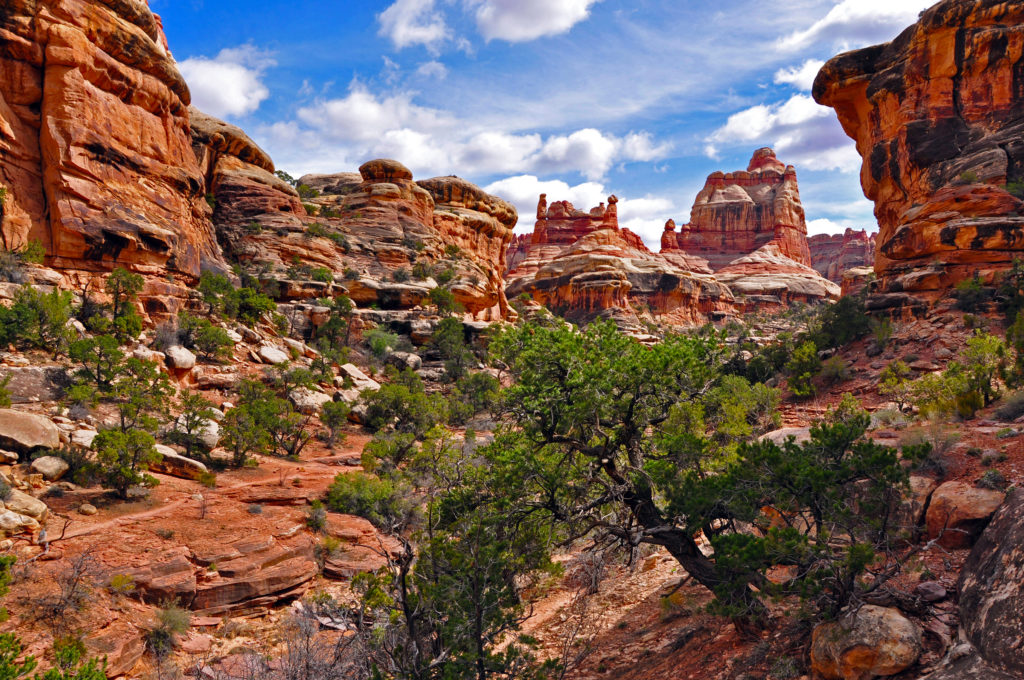
But my true love affair with slot canyons began with Little Wildhorse Canyon, which sits just outside Goblin Valley State Park.
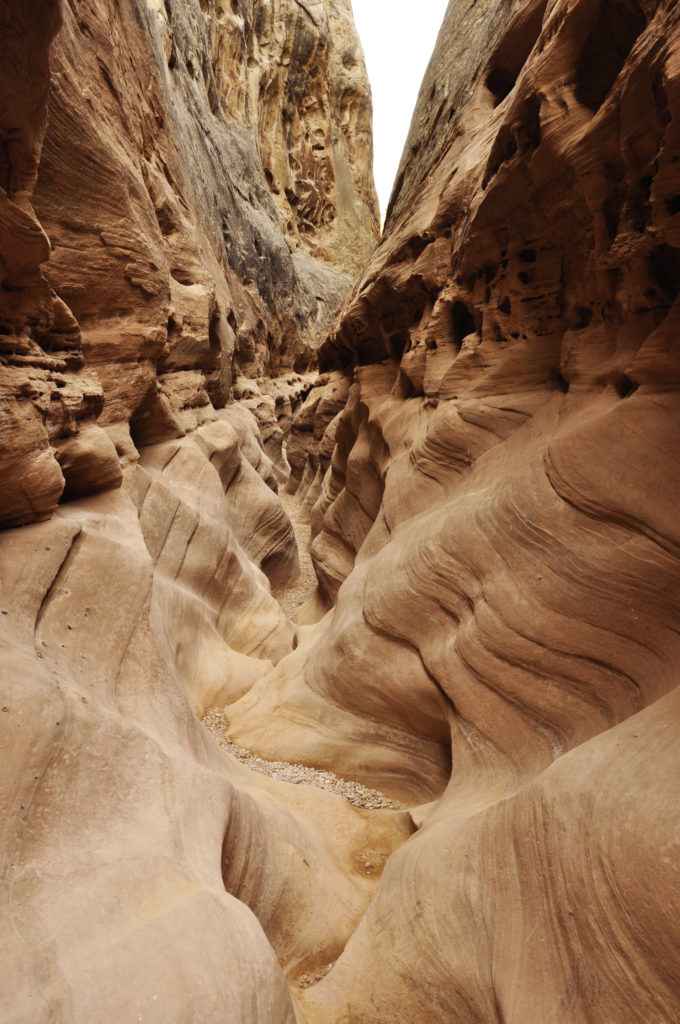
I haven’t hiked all that many slot canyons since, but Little Wildhorse Canyon is the gold standard and basically I’ll hike anything labeled as a slot canyon, no matter how short.
We had a map with a nameless slot canyon on the way to an old calcite mine. It was also on the way to the Salton Sea, so it wasn’t like we had to go out of our way to find it. Besides, Michael loves an opportunity to take Taco Negro off the pavement.
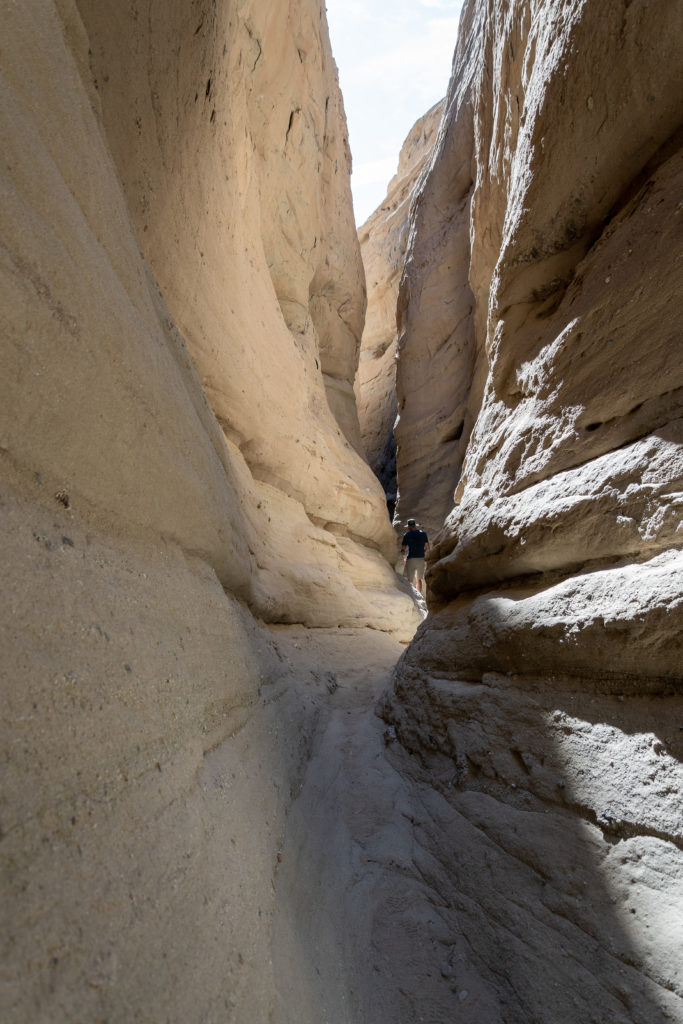
This was a fun hike with some good scrambling opportunities.
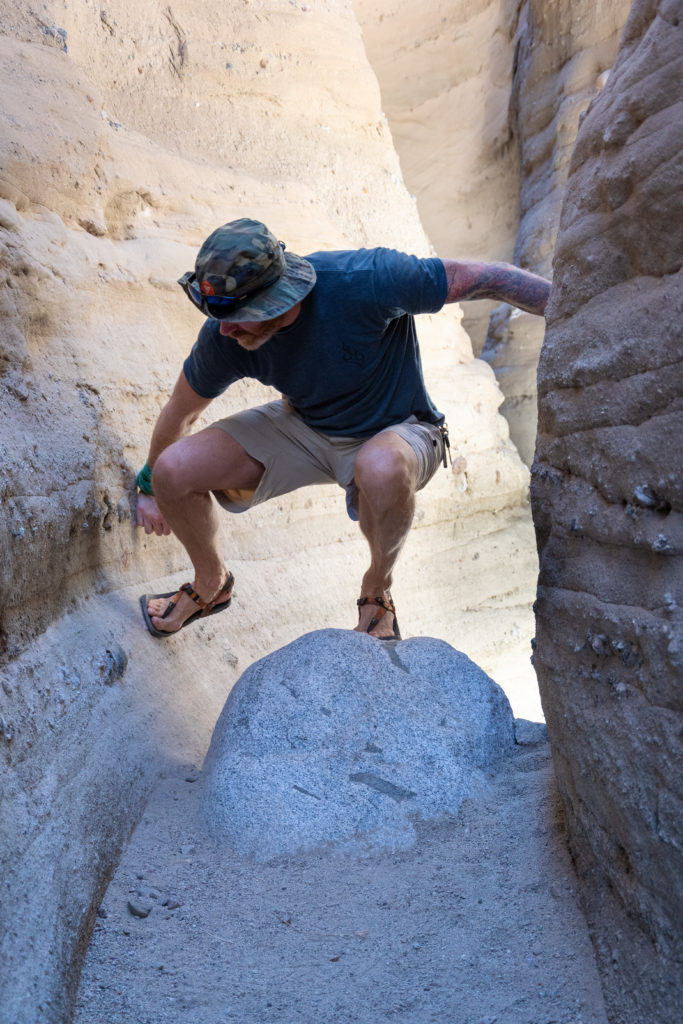
We made it maybe a mile or so through this one before we got to a spot that I couldn’t get around. Michael didn’t have a problem – but then, he’s well over six feet tall – but we had more ground to cover that day anyway and I’d gotten some good pictures so we called it good.
Onward to the Salton Sea. I’d been wanted to come here for a while now, having read up on what is now basically a toxic waste site. The Salton Sea was created by accident in 1905, when the Colorado River breached a dike and then flooded what was originally known as Lake Cahuilla. For two years. The resulting lake brought farmers and, later on, tourists (in the 1950’s the area boasted more visitors than Yosemite) and then Hollywood’s elite. Frank Sinatra and Bing Crosby owned lakefront properties.
The problem was that this area is actually a desert. The flood that created the Salton Sea was a fluke and it never happened again. Rain is scarce and the lake began to dry up. By the late 1950’s things started to fall apart. Rising salinity of the shrinking lake started killing off all the fish living in it. Celebrities sold their mansions. In the 1970’s tropical storms destroyed marinas and resorts. And the lake kept shrinking.
Today the biggest concern around the Salton Sea is toxic dust: the lake bottom contains arsenic, chromium and zinc, as well as pesticides like DDT, and as more of the lake dries up, more of those toxic substances get exposed to the air to blow away in the wind.
So I’ll understand if you think I’m crazy for wanting to see this place.
We spent all of an hour at the Salton Sea, and we only went to Salton Sea Beach.

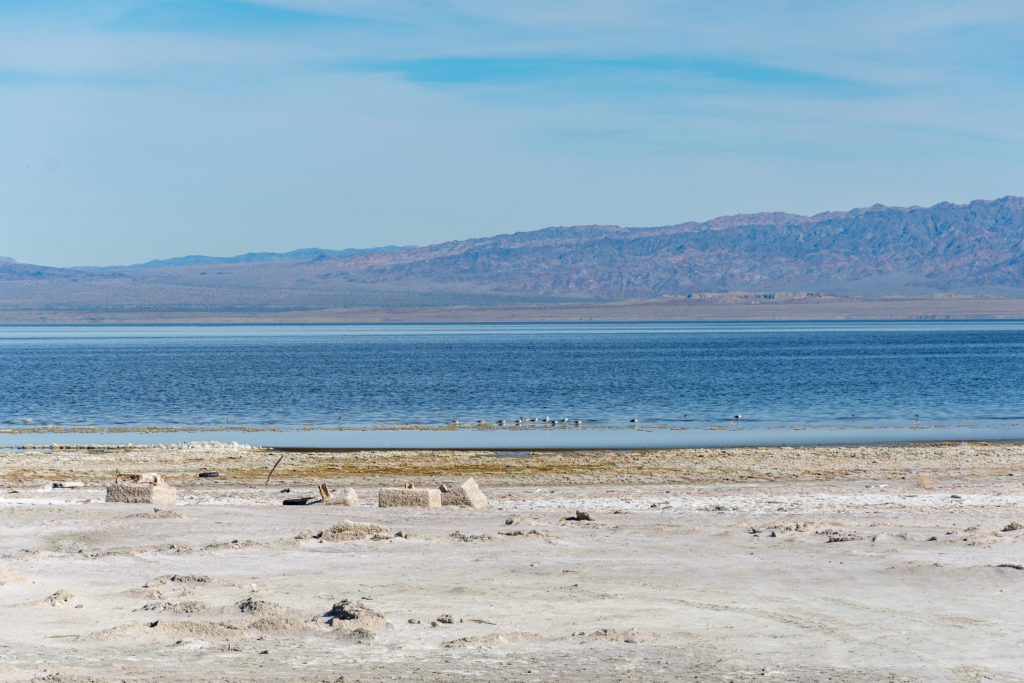
It didn’t smell (I’d read that sometimes the stink coming off the lake is pretty bad), and it didn’t look like a toxic waste site. And part of it is not! The southeastern shore is home to the Sonny Bono Salton Sea National Wildlife Refuge.
It was the drive to the lake that was the most interesting. It might seem odd but even after the storms in the 1970’s this area grew somewhat. The citrus industry here is huge. I read that in the mid-2000’s, right before the housing bubble burst, new homes here were selling for upwards of $270,000. (When the market tanked, those values dropped to something like $50,000.)
So on our way to the Salton Sea Beach, we passed some nice-looking trailers with new cars parked outside. The closer we got to the beach, though, the more apocalyptic the views became.
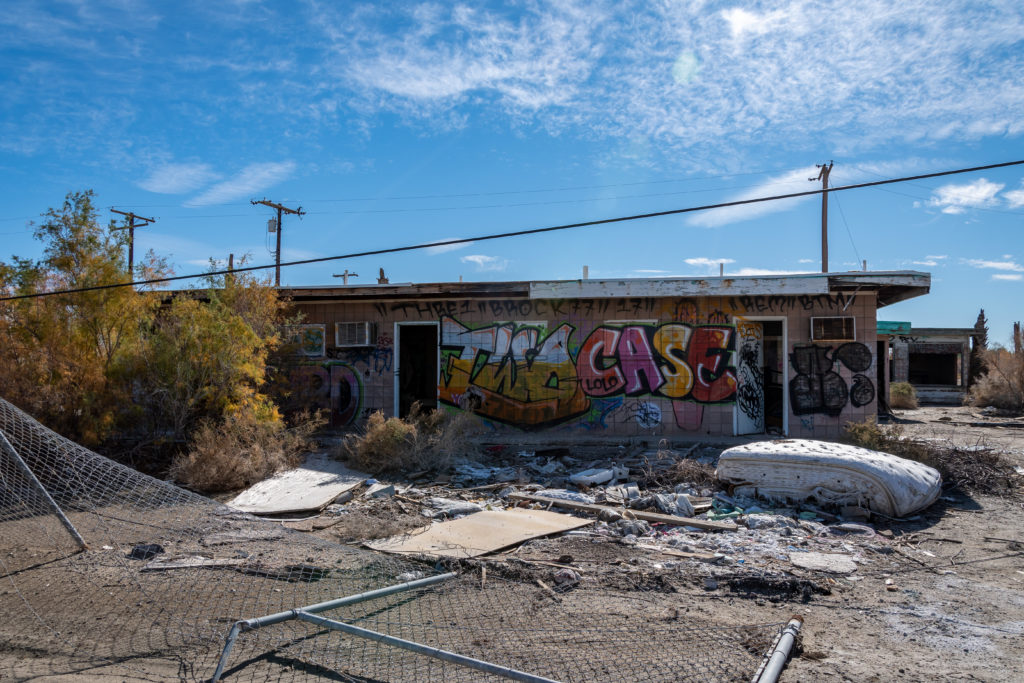
It felt weird taking these photos. Everything is covered with “no trespassing” signs and while so many of these… structures looked abandoned, I didn’t want to risk pissing off an angry landowner by taking pictures of their property. So I took the above photo from the window of the truck. But trust me, the closer we got to the shoreline, the more the houses looked like this.
So yeah, we spent about an hour here, mostly so I could say I’ve been to the Salton Sea.
Time to move on to Joshua Tree National Park.
